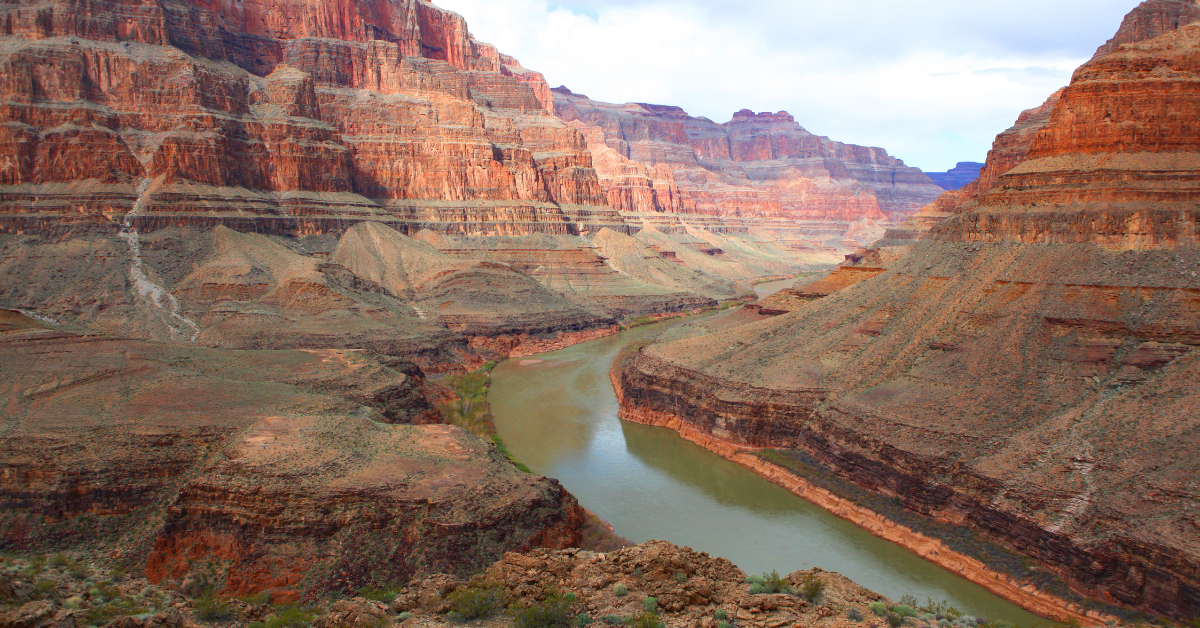The Grand Canyon, located in northern Arizona, is one of the most awe-inspiring natural wonders in the world. For Japanese travelers, it is not just a sightseeing spot but a once-in-a-lifetime experience that blends breathtaking views with quiet moments of reflection. This article reveals how Japanese visitors perceive its vast landscapes, subtle seasonal changes, and the unique atmosphere that cannot be captured in photographs.
First Impressions from Japanese Visitors
Many Japanese people, upon seeing the Grand Canyon for the first time, describe “a vastness so overwhelming that words fail.” Compared to Japan’s mountain scenery, the scale is on an entirely different level, with a horizon where sky and earth seem to merge. The canyon changes expression throughout the day—bathed in red at sunrise, glowing golden at sunset—making it feel alive. On clear days, even the farthest rock walls are sharply visible, emphasizing the depth and three-dimensional scale. Such an immense display of nature’s power is a rare experience, even for Japanese accustomed to beautiful landscapes.
Seasonal Differences in Impressions
Because Japanese culture values the four seasons, impressions of the Grand Canyon differ depending on the time of year.
| Season | Impressions from Japanese Visitors | Characteristics |
|---|---|---|
| Spring | Gentle sunlight and cool breezes feel pleasant | Ideal for sightseeing and photography |
| Summer | Strong sunlight makes the scenery vivid | Staying hydrated is essential |
| Autumn | Crisp air makes distant views exceptionally clear | Perfect for hiking |
| Winter | Snow-covered canyon is magical | Fewer tourists and quieter atmosphere |
Common Highlights in Travel Stories
Views from the observation points are among the most frequently mentioned memories. The panoramic view from the South Rim is often described as “like standing inside a painting of the Earth.” The North Rim offers tranquility and a calmer atmosphere, appreciated by those seeking a quieter experience.
Sunrises and sunsets are treasured moments: the canyon slowly turning gold in the cold morning air or glowing deep red at dusk are sights that remain unforgettable. Hiking trails offer a direct encounter with the rocks’ textures and varied terrain, leading some to say it felt like “walking through the Earth’s history.”
Popular Routes and How They’re Perceived
| Route | Features | Main Japanese Impressions |
|---|---|---|
| South Rim | Well-developed facilities, beginner-friendly | The scale feels overwhelmingly vast |
| North Rim | Fewer visitors | Calm and peaceful |
| Bright Angel Trail | Descends into the canyon | Strong sense of unity with nature |
Points Japanese Travelers Appreciate Most
| Point | Reason |
|---|---|
| Color changes | Rock hues shift from morning to evening |
| Quietness | Only wind and bird calls fill the air |
| Impact | Dramatic elevation changes and vastness |
Japanese Perspectives Worth Sharing with Foreign Visitors
Japanese visitors notice not only the grandeur of the views but also details such as the scent of the air, the temperature of the wind, and the way sounds carry. They tend to plan thoroughly before traveling, considering clothing, supplies, and sightseeing routes in advance. As a result, their travel impressions often blend factual accounts with vivid descriptions of “the atmosphere of the moment.” Foreign travelers adopting this approach will be able to experience the Grand Canyon more deeply.
Tips and Advice from Japanese Travelers
| Concern | Practical Advice from Japanese Visitors |
|---|---|
| Hydration | Bring extra water, especially in summer |
| Clothing | Warm layers are essential in winter |
| Timing | Arrive early for sunrise and sunset views |
Conclusion
For Japanese people, the Grand Canyon is considered a destination worth visiting at least once in a lifetime. While many impressions can be summed up with words like “magnificent,” “moving,” and “awe-inspiring,” they are deeply enriched by sensitivity to seasonal changes and detailed observation. Foreign travelers who embrace the Japanese perspective can enjoy not just sightseeing, but a journey of dialogue with nature.






